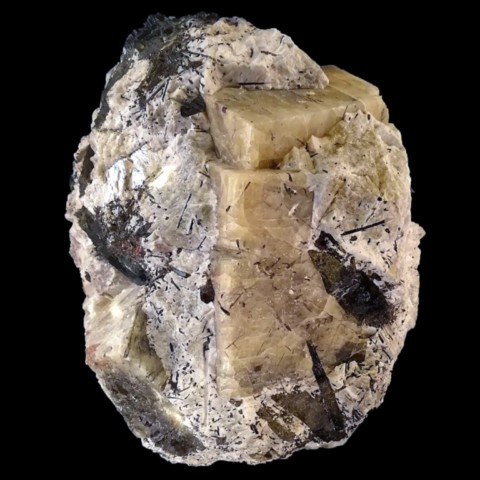LEUCOPHANITE
Class : Silicates
Subclass : Inosilicates
Crystal system : Orthorhombic
Chemistry : NaCaBeSi2O6F
Rarity : Rare
Leucophanite is a rare silicate of beryllium, calcium and sodium. It is found in nepheline syenites and augite syenites as well as their pegmatites. Its name comes from the Greek leukos (white) and phainein (to appear) because of its whitish color. Leucophane forms small, short to tabular prismatic crystals not exceeding 3 cm, fibroradiated spherolites or small masses, yellowish white to greenish white, sometimes greenish yellow or pink-orange.
Main photo : Leucophanite from Poudrette Quarry, Mont St-Hilaire, Quebec, Canada © Stephan Wolfsried
Leucophanite in the World
Twinning
Polysynthetic twins parallel to {110] are known as well as interpenetration twins.
Fakes and treatments
No fakes recorded for this mineral species.
Hardness : 4
Density : 2.96 to 3.07
Fracture : Irregular to conchoidal
Streak : White
TP : Translucent to transparent
RI : 1.571 to 1.598
Birefringence : 0.027
Optical character : Biaxial -
Pleochroism : None
Fluorescence : Orange, pink, blue
Solubility : -
Magnetism : NoneRadioactivity : None





